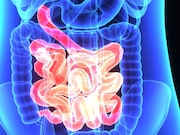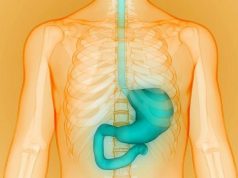Microbial and metabolic features can differentiate preadolescent children with IBS from controls
WEDNESDAY, April 17, 2019 (HealthDay News) — Microbial and metabolic features can distinguish children with irritable bowel syndrome (IBS) from controls, according to a study published online April 17 in the Journal of Molecular Diagnostics.
Emily B. Hollister, Ph.D., from the Baylor College of Medicine in Houston, and colleagues used a comprehensive clinical characterization and multiomics strategy to examine the correlations between pediatric IBS and abdominal pain with intestinal microbes and fecal metabolites. Twenty-three preadolescent children (aged 7 to 12 years) with Rome III IBS and 22 healthy controls were identified, and their fecal microbial communities were characterized using whole-genome shotgun metagenomics and fecal metabolomic profiling.
The researchers found that IBS cases and controls differed with respect to key bacterial taxa (Flavonifractor plautii and Lachnospiraceae bacterium 7_1_58FAA), metagenomic functions (carbohydrate and amino acid metabolisms), and higher-order metabolites (secondary bile acids, sterols, and steroid-like compounds). Significant associations were identified between abdominal pain frequency and severity and intestinal microbial features. A random forest classifier developed on metagenomics and metabolic markers could differentiate IBS cases from controls with an area under the curve of 0.93.
“Additional studies evaluating the ability of these bacterial features and metabolites in distinguishing IBS from other functional gastrointestinal tract disorders, as well as their roles in pathophysiology of childhood IBS, are needed and may lead to improved diagnostics and therapeutics for IBS,” the authors write.
Several authors disclosed financial ties to the pharmaceutical and nutrition industries.
Copyright © 2019 HealthDay. All rights reserved.








